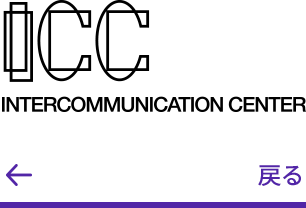
Real Panopticon
by ETO Koichiro
![[Real Panopticon Screen Image]](eto.gif)
|
Do you change the way you behave when you know that you're being
watched? Does it matter whether you're actually being watched, or is
it enough to suspect that someone might be watching you? Simple tasks
become more difficult. Your choices more complex, and
self-conscious. Given a premise of scrutiny, noy only your behavior,
but your perception of the act of observing others is also modified.
This work employs a server accessed by several people to simulate a crowded environment. Each action within each other's periphery of vision. The Net is such a crowded place, and issues of privacy in networks are called into consideration. On thi page, the user can observe the others observing "on the Web." They can also be observed in the act of observing them. "Real Panopticon" is a graphic display of data on what works are being viewed at the moment by those accessing "on the Web." Participants could also find out where the event was being accessed from. By viewing this work, participants were able to find out about the process and conditions of access, such as how others were moving through the network museum and which homepages were popular, which resulted in changes in their own actions afterwards. Because the data was renewed in real time, it was necessary to continue viewing this work over a certain period of time in order to fully enjoy it. This time element successfully emphasized a new aspect of WWW which is not apparent in customary usage.
Postscript by ETO Koichiro
In the "Real Panopticon," one can see who is looking at which pages at
a given moment, just as if they were browsing in a bookstor. However,
this work does not act as a space, but rather as a site for one-way
observation of the actions of others. I gave it the above title
because the format reminded me of the prison format of panopticon, but
unlike a prison, it was not obvious to the people being watched that
they were being watched. This was a major difference.
Before the "Real Panopticon," I created a work called "PeepHole." A
camera was linked to the network, and one could peep through the
camera eye by accessing the "PeepHole" homepage. I had wanted to make
the "Real Panopticon" as different as possible from "PeepHole," but
looking back on it now I can see numerous commonalities.
A space in which the relationship between the observer and the
observed is asymmetrical--the intervention of mediation inevitably
gives rise to a discrepancy between the gazes of the observer and the
observed. For those who are being observed, this discrepancy of gaze
functions as the gaze of surveillance.
I consider the communication system of the network to be something
that functions as space. Unlike real space, this so-called `virtual
space' is inextricably bound to discrepancies of gaze and perception
due to the intervention of some kind of mediation. I thought it might
be of interest to visibly emphasize those discrepancies.
I also believe that the issue of privacy will become a major problem
on the Internet in the future. One users the Internet to access a
server and obtain information. It is often thought that this process
is just like getting information from magazines and television, but
there is a major difference. On the Internet, the server makes a
record of who accessed what homepages when, and in what order. To
obtain information through the Internet is at the same time to leave
information behind.
In most cases, such records can only be seen by the people who
maintain the server. Quite often, the users aren't even aware that
they are leaving a record behind. At present, this circumstance has
not been made into much of an issue, but I believe that in the near
future it will be taken up sa a problem of privacy.
Finally, I want to express my appreciation to the many people who
offered their assistance towards the completion of this work. Special
thanks go to the programmer Mr.IGARASHI Hisakazu, who offered valuable
advice despite his busy schedule.
|